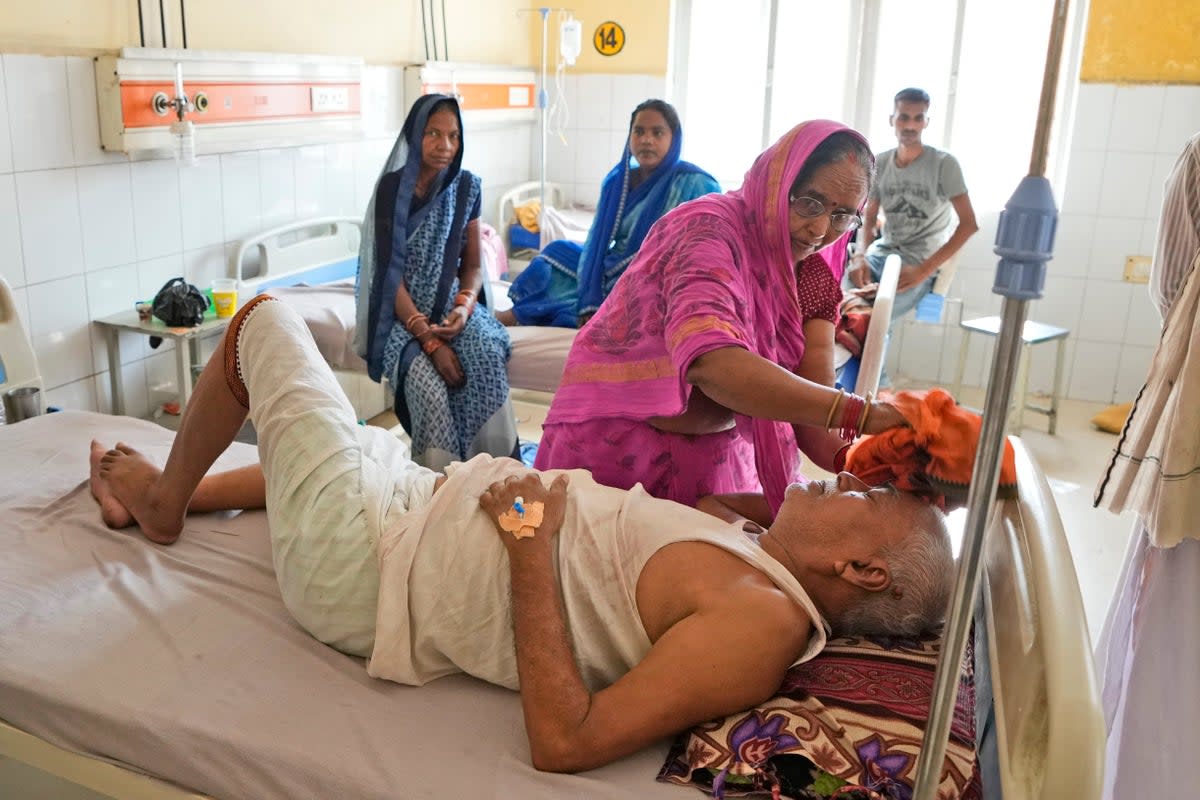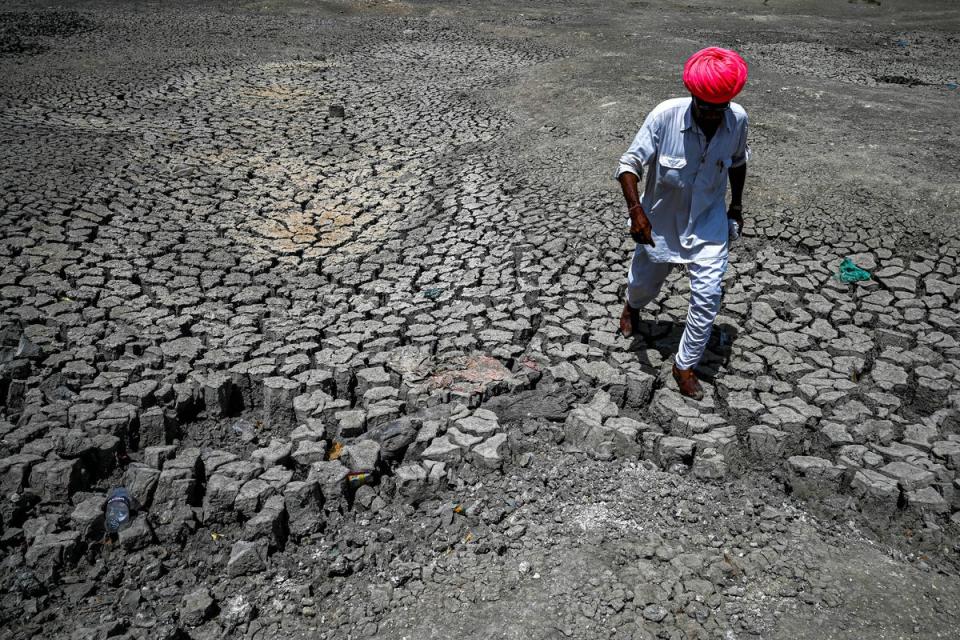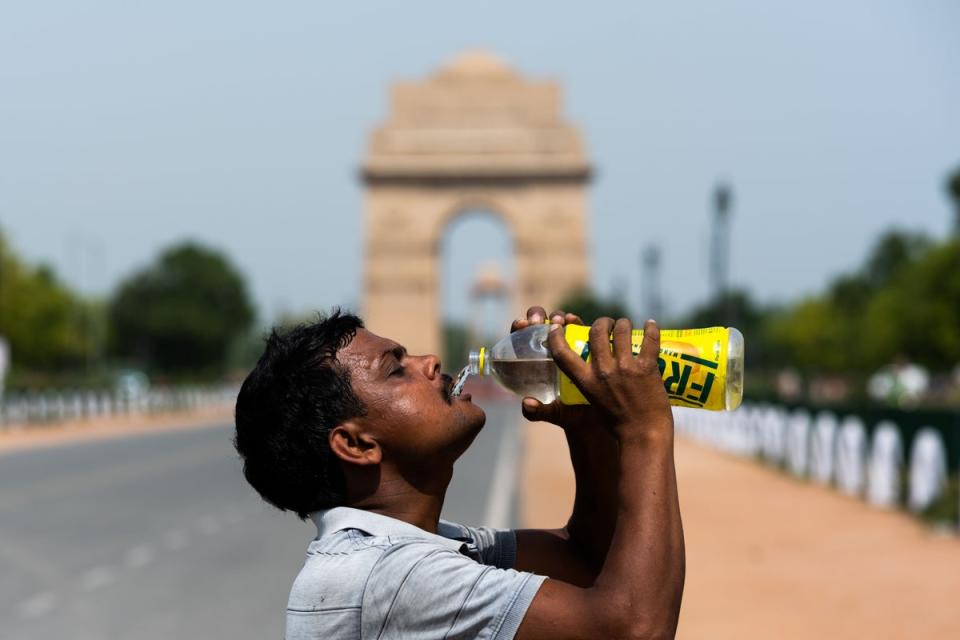Freak April heatwave in Southeast Asia ‘virtually impossible’ without climate crisis

The brutal heatwaves sweeping across Asia this year were made much more extreme due to the human-induced climate crisis, a new study has found.
Since the beginning of April, dozens of countries in Asia from India to the Philippines have seen record-high temperatures leading to school closures and the triggering of urgent health warnings across the region.
This is the third year in a row that billions of people in Asia have experienced brutal heatwaves that shattered records and killed dozens of people.
Now a study, conducted by scientists from World Weather Attribution (WWA), has found that this year’s heatwave would have been “virtually impossible” in the Philippines and a lot less extreme in South and West Asia without the climate crisis caused by burning oil, coal and gas.
Last month was the hottest April on record globally and the 11th straight month to break that record. Temperatures soared above 40C in many Asian countries, with the Philippines and Bangladesh shutting down schools. Dozens of heatwave-related deaths and longer droughts were also reported.

In the Philippines, ruins of a 300 year-old town emerged after a dam dried off and in Vietnam hundreds of thousands of fish died due to dwindling water levels.
In India, temperatures reached 46C and five deaths were attributed to heatwaves. Meanwhile, Myanmar, Laos, Vietnam broke records for their hottest April day, and the Philippines experienced its hottest night ever.
Over 30 deaths were recorded in Thailand and 28 in Bangladesh due to heatwaves.
Scientists say these losses are just the tip of the iceberg as heat-related deaths and its impact are highly underreported.
To quantify the effect of human-induced warming on the extreme temperatures across Asia, scientists analysed weather data and climate models using peer-reviewed methods to compare how these types of events have changed between today’s climate, with approximately 1.2C of global warming, and the cooler pre-industrial climate.
The analysis focused on the periods when the heat was most dangerous in two regions: the three-day average of maximum daily temperatures in a region of West Asia that included Syria, Lebanon, Israel, Palestine and Jordan, and the 15-day average of maximum daily temperatures in the Philippines.

The scientists also analysed the possible influence of El Nino, a naturally occurring climate phenomenon that often brings more heat to Asia.
The study looked at historical weather data for a region of South Asia that includes India, Bangladesh, Myanmar, Laos, Vietnam, Thailand and Cambodia.
In West Asia, otherwise known as the Middle East, scientists found that April heatwaves with temperatures above 40C have become more frequent due to warming caused by human activities.
In today’s climate, with 1.2C of warming, similar heatwaves are expected to occur about once every 10 years, becoming about five times more likely and 1.7C hotter.
The scientists warned that in future extreme temperatures in West Asia could become even more frequent and intense. If warming reaches 2C, as it is expected, similar heatwaves will occur about once every five years and will become another 1C hotter.
El Nino was found to have no influence on the high temperatures in West Asia.
In the Philippines, similar heatwaves are expected to occur about once every 10 years during El Nino conditions and about once every 20 years in other years without the influence of El Nino.
Without human-induced climate change, such an event would have been virtually impossible, even under El Nino conditions, the scientists found.
Overall, climate change made this year’s heatwave 1C hotter, while El Nino made the heatwave a further 0.2C hotter.
If global warming reaches 2C, similar heatwaves in the Philippines will occur every two to three years and will become another 0.7C hotter.

In South Asia, similar 30-day heatwaves can be expected to occur about once every 30 years. However, they have already become about 45 times more likely and 0.85C hotter due to the climate crisis, according to historical weather data.
The analysis of historical weather data also found that similar heatwaves are twice as likely to occur during El Niño conditions.
The study highlights how the climate crisis is making life much tougher for people in Asia living in poverty and dealing with the effects of war.
In Gaza, many of the 1.7 million displaced people are living in improvised tents that trap heat, and have limited access to healthcare, clean drinking water, and options to stay cool.
“Heatwaves have always happened. But the additional heat, driven by emissions from oil, gas and coal, is resulting in death for many people,” said Dr Friederike Otto, senior lecturer in climate science at Imperial College London.
Across South and Southeast Asia, the hundreds of millions of people who live in informal housing and work outdoors, like farmers, construction workers and street vendors are disproportionately affected by extreme heat.
A spokesperson for Unicef had already raised an alarm that 243 million children were exposed to hotter and longer heatwaves this summer, putting them at risk of “a multitude of heat-related illnesses, and even death”.
Scientists have called for urgent heat action plans and rapid reduction in carbon pollution to stop temperatures from spiralling further.

